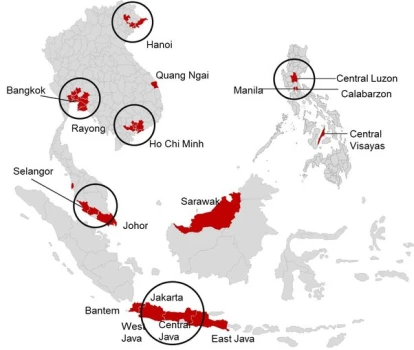Fighting against employee turnover is a challenge that no organization can ignore anymore. The turnover issue starts with Talent Acquisition: the objective is to recruit employees who have the required behaviors and who will stay in the organization for the years to come.
But employers cannot neglect their responsibilities in trying to retain their workforce and keeping employees engaged in the long run. Failing to take the responsibility to retain the workforce will make even the most performing and motivated employees start looking elsewhere.
3 main factors impacting employee turnover cost:
- Company culture: According to Columbia University, the likelihood of job turnover at an organization with high company culture is a mere 13.9 percent, whereas the probability of job turnover with low company culture is 48.4 percent.
- Career path and learning opportunities: Career path and opportunities to learn and grow are increasingly important for Millenials and Gen Z. According to a Linkedin study, 94% of employees would stay longer at a company if the investment was made towards learning and development.
- Leadership and management: Managers are also important for the working environment. According to Gartner, 68% of employees would consider leaving their current job if they do not feel supported by their management.
Let’s take a closer look at what the real cost of Turnover is. Contrary to common belief which only takes into account “recruitment costs” to explain the overall cost of employee turnover; there are other factors that should be computed in the total cost of turnover.
The “hidden cost” might be higher than what you think. Let’s have a closer look at this hidden part of the iceberg.
Why is the cost of a bad hire so high?
1. Cost of vacancy (COV)
The cost of vacancy is defined as the cost of impact when the position is not fulfilled.
For jobs whose mission is to generate revenue; when such roles are unfulfilled, the COV calculation is easy to calculate. You just have to determine the revenue quota that is not met as the role remains unfilled.
However, for job positions that are not directly revenue generators (Non-sales roles such as HR, Finance, IT, etc); It is more difficult to quantify the loss of productivity, effect on team morale, impact on project deadlines, and the overall costs to cover the for the unfilled vacancy (such as paying overtime as a result of work overload for the current team). A Harvard University study finds that the average Cost of vacancy of employees for an organization is three times higher than their salary.
2. Cost of recruitment
The total cost of recruitment is the most visible part of the iceberg: the cost of recruitment can be linked to “direct costs” of the employee turnover and computes all expenses related to :
- Cost of advertisements: how much does it cost to publish job ads
- Cost of the recruitment team: Salary spent in HR salary to fill the vacancies and lead the end to the end recruitment process (from opening the role, screening CVs, interviewing candidates, performing reference checks, to issuing final offers).
- Cost of recruitment agencies: any cost related to outsourcing the recruitment, or costs related to external providers (assessments, psychometric tests, etc).
3. Cost of onboarding
After recruiting, new hires need to be properly integrated within the organization and trained to fit the requirements of the missing position.
The cost of onboarding can reach around 26% of the total costs of turnover. This process generally requires the use of instructional materials, and significant time spent training from both line managers and co-workers so the new recruit can :
- Understand the company environment, people, culture and ways of working
- Handle progressively the full job scope and perform his duties in a timely and efficient manner.
4. Cost of non productivity
The cost of non-productivity is defined as the cost lost in productivity until the new employee is 100% productive and completely fit to take on the role.
As a general rule of thumb the cost of non-productivity can be estimated as follow:
- During the first month: After training is completed, new employees are functioning at about 25% productivity, which means that the cost of lost productivity is 75% of the employee’s salary.
- Beyond the first month, the employee usually reaches a productivity rate of up to 75%, with the cost being 25% of the employee’s salary.
5. Nonquantifiable factors that may impact your employee turnover cost
- Workloads for the team: The assignments that used to be performed by the missing employee have to be handover to the remaining team, who must ensure continuity. This extra workload often results in lower productivity and team efficiency.
- Depleted employee morale: Employees who leave the organization may have a good relationship with their co-workers. The loss of a precious team member usually leads to lower team morale, bitterness towards management, and decreased engagement, and productivity.
- Reputation risk: Employees who leave the organization on bad terms (for whatever reason) may tarnish the organization’s reputation, which may detrimentally impact the organization’s revenue, as well as the ability of the company to attract talents (impact on brand image).
- Risk of losing long-standing customers: For revenue-generating employees on good terms with their customers, the risk of leaving the company with the existing client portfolio can become very high if they leave for the competition. Such risk may directly impact business continuity depending on the industry and the employee position in the company.






